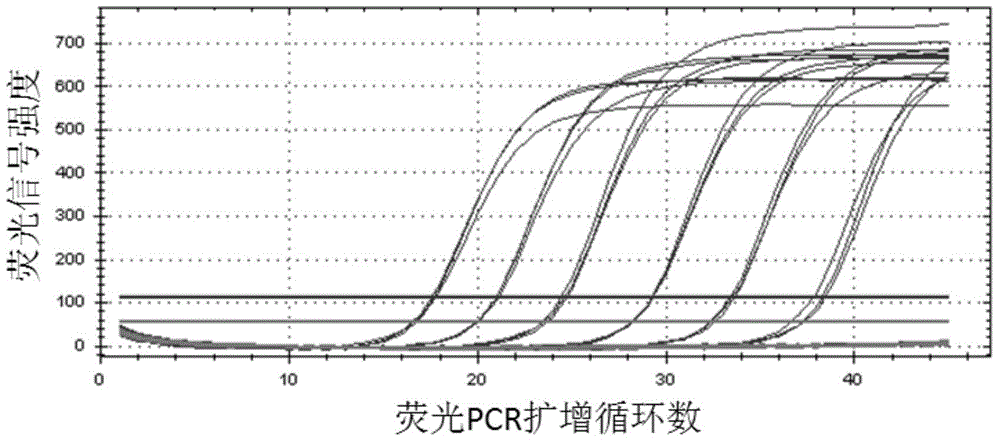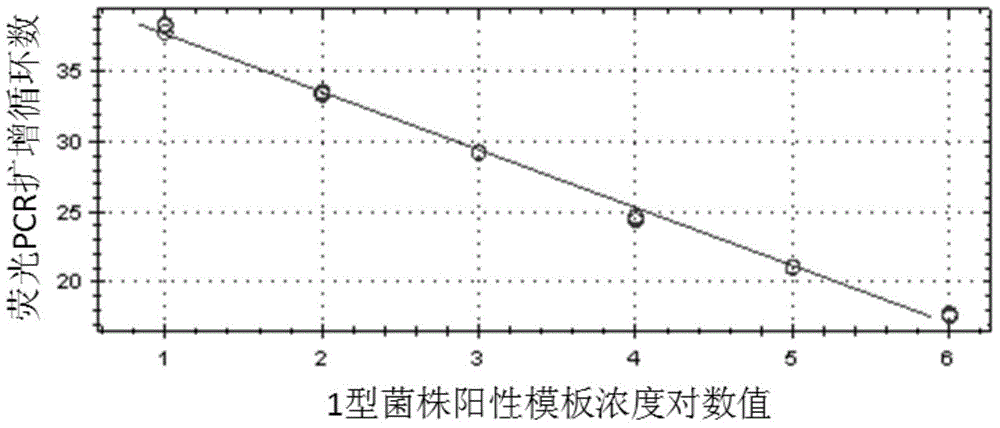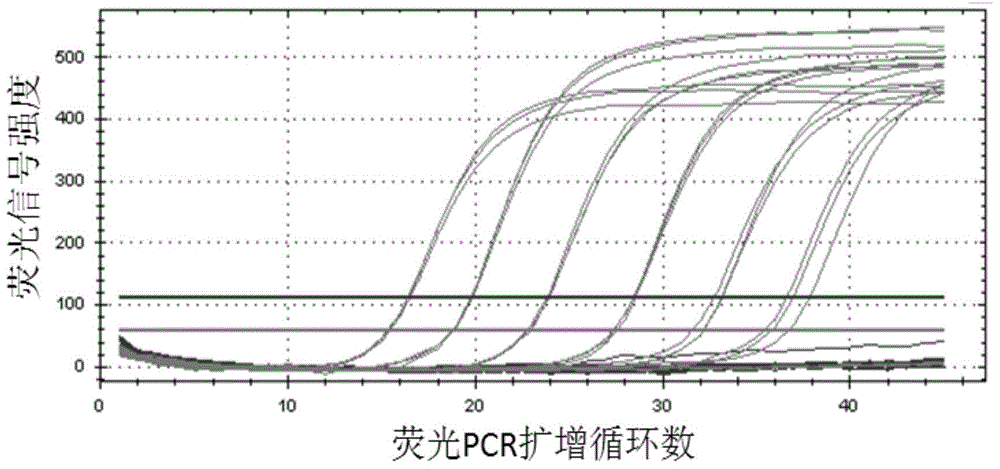Kit for rapid detection and genotyping of mycoplasma pneumoniae
A Mycoplasma pneumoniae and genotyping technology, which is applied in the field of microbial detection, can solve the problems of difficult cultivation of Mycoplasma pneumoniae specimens, restrict the research and development of Mycoplasma pneumoniae, and is not enough to support detection, and achieve good clinical application prospects, save manpower, and meet operating conditions. not harsh effect
- Summary
- Abstract
- Description
- Claims
- Application Information
AI Technical Summary
Problems solved by technology
Method used
Image
Examples
Embodiment 1
[0052] Example 1 Determination of target sequences for detection and genotyping of Mycoplasma pneumoniae
[0053] 20 clinical isolates of different types of domestic Mycoplasma pneumoniae were selected for enrichment culture, and the DNA of the whole bacteria was extracted. After the concentration was determined, the whole genome was sequenced using the Illumina Hiseq 2000 sequencer. The sequenced strains and the complete genome sequences of 8 strains of Mycoplasma pneumoniae known in the NCBI database [M129 (GenBank: U00089.2); FH (GenBank: CP002077.1); 309 (GenBank: AP012303.1); M29 (GenBank: CP008895 .1); M129-B7 (GenBank: CP003913.2); PO1 (GenBank: ANAA00000000.1); 19294 (GenBank: ANIQ00000000.1); PI1428 (GenBank: ANAB00000000.1)] using Mauve software for whole genome sequence comparison Yes, find out the specific nucleic acid sequence regions of type 1 strain and type 2 strain: there is a sequence-specific nucleotide fragment of about 3kbp in the genome of type 1 strain, ...
Embodiment 2
[0054] Example 2 Design of primers and probes for target sequences
[0055] The target sequences of the Mycoplasma pneumoniae type 1 and type 2 strains obtained in Example 1 were analyzed, the highly conserved regions were selected, and probes and primers suitable for dual fluorescent PCR were designed using Primer Express Version 3 software. The probe type is TaqMan probe, the probe for detecting type 1 strains is 5' labeled with the fluorescent group FAM, the 3' is labeled with the quencher group BHQ1, and the probe for detecting type 2 strains is 5' labeled with the fluorescent group VIC, 3' Label the quencher group BHQ1.
[0056] The primer and probe sequences are as follows:
[0057] MP 1-F: CCAGATTCACGTTTAATTTC
[0058] MP 1-R: GCATCTAACATGAAGACTG
[0059] MP 1-P: FAM-AACCAACAACTTCTCATTCATCCTCAG-BHQ1
[0060] MP 2-F:TTGGGTAAACCTAATTTGC
[0061] MP 2-R:ACACGTATTAGCATCACTA
[0062] MP 2-P: VIC-AAGACTATTCGCCTTACAACCAACC-BHQ1.
Embodiment 3
[0063] Example 3 Optimization and method establishment of dual fluorescent PCR condition parameters for detection and genotyping of Mycoplasma pneumoniae
[0064] (1) Optimization of magnesium ion concentration in the system: MgCl in the system 2 Increase from 0.5 μl to 4 μl successively, each increment of 0.5 μl, and make 3 parallel samples for each concentration gradient. ResultMgCl 2 The amount added is 1.5 μl (MgCl 2 The amplification effect of the system is the best when the final concentration is 4mM).
[0065] (2) Optimization of the annealing temperature of the system: the annealing temperature of the system was changed from 55°C to 65°C, and the results showed that the amplification effect of the system was the best when the annealing temperature was 55°C to 57°C.
[0066] (3) Establishment of dual real-time fluorescent quantitative PCR method for detection and genotyping of Mycoplasma pneumoniae
[0067]
[0068]
[0069] For the above primers and probes, r...
PUM
| Property | Measurement | Unit |
|---|---|---|
| Sensitivity | aaaaa | aaaaa |
Abstract
Description
Claims
Application Information
 Login to View More
Login to View More - R&D
- Intellectual Property
- Life Sciences
- Materials
- Tech Scout
- Unparalleled Data Quality
- Higher Quality Content
- 60% Fewer Hallucinations
Browse by: Latest US Patents, China's latest patents, Technical Efficacy Thesaurus, Application Domain, Technology Topic, Popular Technical Reports.
© 2025 PatSnap. All rights reserved.Legal|Privacy policy|Modern Slavery Act Transparency Statement|Sitemap|About US| Contact US: help@patsnap.com



